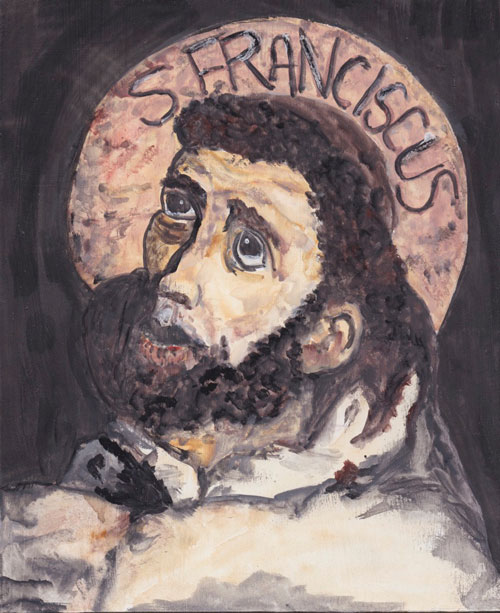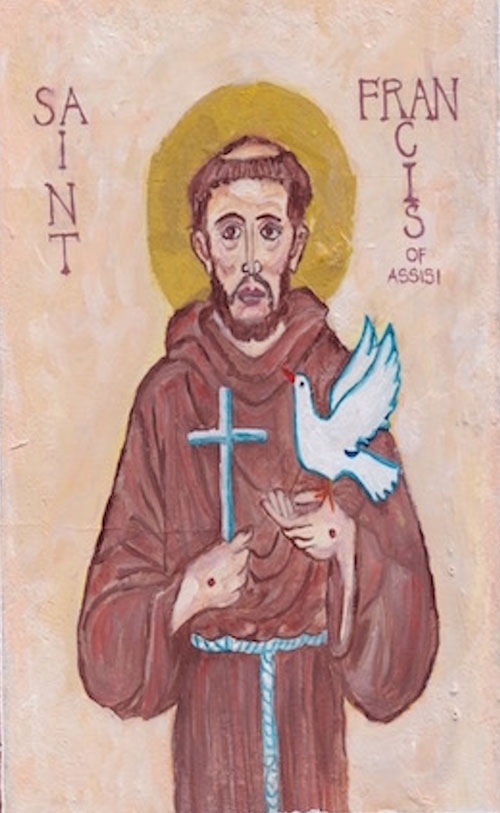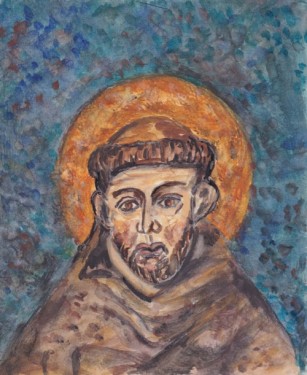By AnnaMarie Prono

St. Francis of Assisi is one of the first saints I learned about as a child. He was the animal saint, the crèche saint and the saint whom I prayed to when our dog ran away for three days. On the fourth day, my father came home with Rocky. Years later, I traveled to Assisi, Italy, and visited the grounds and church where the future saint prayed.
In Bishop Robert Barron’s new Pivotal Players Series, a multi-part film series that illumines some of history’s most influential saints, artists, mystics and scholars, St. Francis of Assisi is referred to as one of the more accepted saints in our very secular world.
The bishop mentioned the birdbaths and garden statues that assume his image in suburban neighborhoods. I identified with his statement, realizing that although many non-Catholics do not acknowledge the Blessed Virgin Mary, or many of our other saints, St. Francis can be considered everybody’s saint.
Animal lovers, gardeners and even those in recovery programs, recognize St. Francis. Some call him the saint for the environment. This man, who wore a brown habit and sandals, was known to preach to birds and animals. According to legend, he even tamed a wolf that terrorized a town in Italy.
His Oct. 4 feast day is often celebrated in churches, with a dedication to animals, where people bring their household pets to receive a blessing from the priest.
Twelve-step programs have adopted what many refer to as the Prayer of St. Francis, or the Peace Prayer:

“Lord, make me an instrument of Thy peace;
Where there is hatred, let me sow love;
Where there is injury, pardon;
Where there is error, truth;
Where there is doubt, faith;
Where there is despair, hope;
Where there is darkness, light;
And where there is sadness, joy.
O Divine Master, Grant that I may not so much seek
To be consoled as to console;
To be understood as to understand;
To be loved as to love.
For it is in giving that we receive;
It is in pardoning that we are pardoned;
And it is in dying that we are born to eternal life.”
A Simple Prayer
Originally called “A Simple Prayer,” this prayer was discovered in the early 1900s in a French magazine, called La Clochette (the little bell), and titled with the English translation, “A Beautiful Prayer to Say During the Mass.”
Many translations traveled throughout Europe. Under Pope Benedict XV, the prayer circulated as a plea for peace during the throes of World War I.
Although St. Francis did not write this prayer, many associate it with him, as it exemplifies the selfless ministry that he started, putting others before him. As the son of a wealthy cloth merchant in Italy, he gave up his life of comfort when the crucifix in the Church of San Damiano spoke to him, with a request to rebuild Christ’s Church that was in disrepair.

Interpreting God’s Plan
As an architect, I totally understand St. Francis’ initial response to the voice of Jesus, when he set out with a band of men in search of stones to make masonry repairs in the church. This was a reasonable response and plan of action. Because I am often guilty of making literal interpretations, I do not think I would have figured out God’s plan in the short time frame that St. Francis did.
And it was with great fervor that the saint moved to accomplish his mission, founding the Franciscan order and leading a life of continuous service. He also cofounded The Poor Clares, the second Franciscan Order, with St. Clare of Assisi on Palm Sunday in 1212.
Bishop Barron’s DVD is filled with beautiful images from Assisi, and numerous works of art that illustrate the events in St. Francis’ life. Bishop Barron discusses St. Francis’ life; sharing various tidbits about the humble man and inspires further contemplation and a desire to learn more about Franciscan spirituality.
A member of Our Lady of Mercy parish, Forest Hills, Prono is in her final year of the Brooklyn Diocese’s lay ministry program.

another wonderful contribution to The Tablet! the art work is beautiful and inspirational. well done